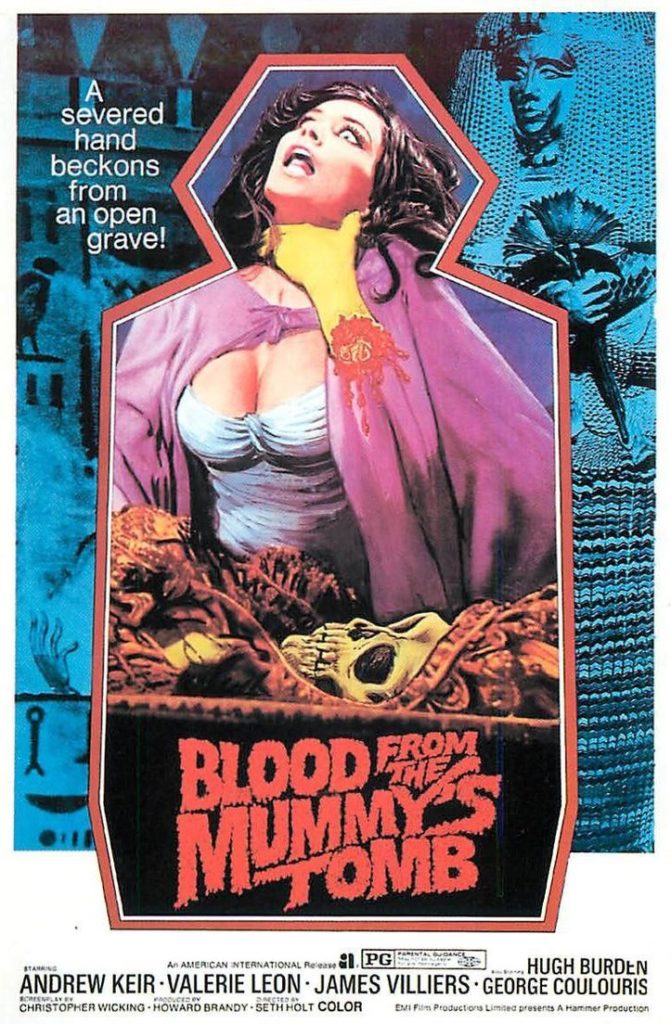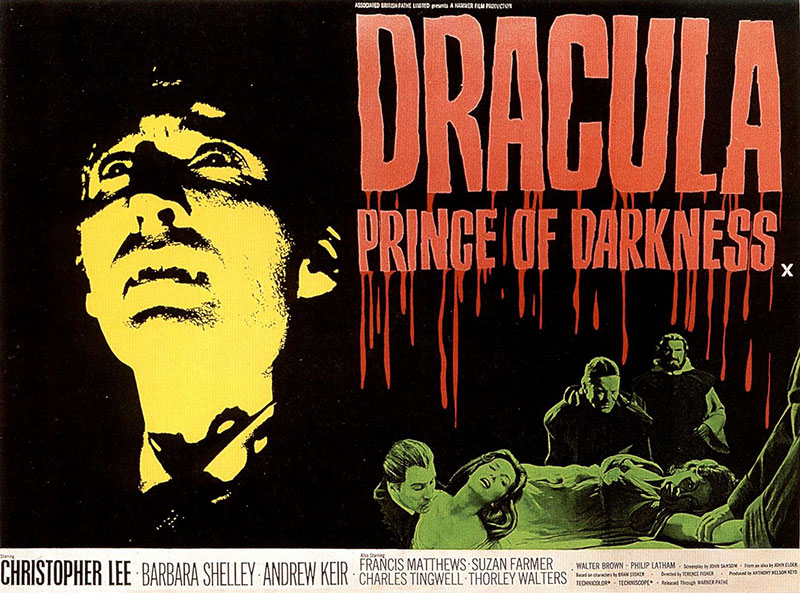 Hammer, in a wise decision, jettisoned much of the tropes they had used in their previous Mummy films. For three consecutive productions, they had made basically the same film. British archaeologists discover ancient Egyptian tomb, said tomb has a curse on it, ancient Egyptian mummy resurrects and kills those who dared desecrate the tomb. It really was the same thing again and again. That was all well and good when they did it the first time, but by the last film, The Mummy’s Shroud, the plot was too familiar, and everyone involved seemed to be just going through the paces.
Hammer, in a wise decision, jettisoned much of the tropes they had used in their previous Mummy films. For three consecutive productions, they had made basically the same film. British archaeologists discover ancient Egyptian tomb, said tomb has a curse on it, ancient Egyptian mummy resurrects and kills those who dared desecrate the tomb. It really was the same thing again and again. That was all well and good when they did it the first time, but by the last film, The Mummy’s Shroud, the plot was too familiar, and everyone involved seemed to be just going through the paces.
The fourth film, Blood from the Mummy’s Tomb, stays true to only some of the core elements, going so far as to ditch the traditional bandages and rags of films past. In this film, written by Christopher Wicking, loosely adapting Bram Stoker’s novel The Jewel of Seven Stars, the mummy is the perfectly preserved corpse of Queen Tera, who died young and buxom, and thus couldn’t be wrapped in bandages, oh no.
Her tomb is discovered by the requisite British Egyptologists, but they bring the dead queen and her artifacts back to England in secret, rather than placing them in a museum or putting on a tour. That’s because, for reasons that are never adequately explained, some of the party wish to resurrect the queen, so she can rule again. Anyway, the resurrection part is kind of on the periphery, because in the meantime, Queen Tera has a doppelganger in Margaret Fuchs (Valerie Leon, who plays both Margaret and Tera), the daughter of the archaeological expedition’s leader, Julian Fuchs (Andrew Keir). She was born in England at the very moment Queen Tera’s sarcophagus was opened, revealing the scantily clad beauty within. Continue reading “Blood from the Mummy’s Tomb, or, Underboob: The Movie”

 After eight years, Dracula, the actual Dracula and not some misdirection with the title, is back in Hammer’s 1966 film Dracula: Prince of Darkness. 1958’s Dracula (Horror of Dracula in the US) is among the most well-known and revered of Hammer’s horror catalogue. It was also a moneymaker. So, for a company that was in the business to make a buck I find it surprising that it took Hammer eight years to put a sequel together. Part of the problem may have been Dracula’s recalcitrant star, Christopher Lee. He led a most interesting life, mingling with true giants on a regular basis. Sometimes it feels like he did all this cheap horror to pay the rent, but his heart was never really in it. Like many stars he often failed to do the decent thing and keep his mouth shut about a project after filming wrapped.
After eight years, Dracula, the actual Dracula and not some misdirection with the title, is back in Hammer’s 1966 film Dracula: Prince of Darkness. 1958’s Dracula (Horror of Dracula in the US) is among the most well-known and revered of Hammer’s horror catalogue. It was also a moneymaker. So, for a company that was in the business to make a buck I find it surprising that it took Hammer eight years to put a sequel together. Part of the problem may have been Dracula’s recalcitrant star, Christopher Lee. He led a most interesting life, mingling with true giants on a regular basis. Sometimes it feels like he did all this cheap horror to pay the rent, but his heart was never really in it. Like many stars he often failed to do the decent thing and keep his mouth shut about a project after filming wrapped.